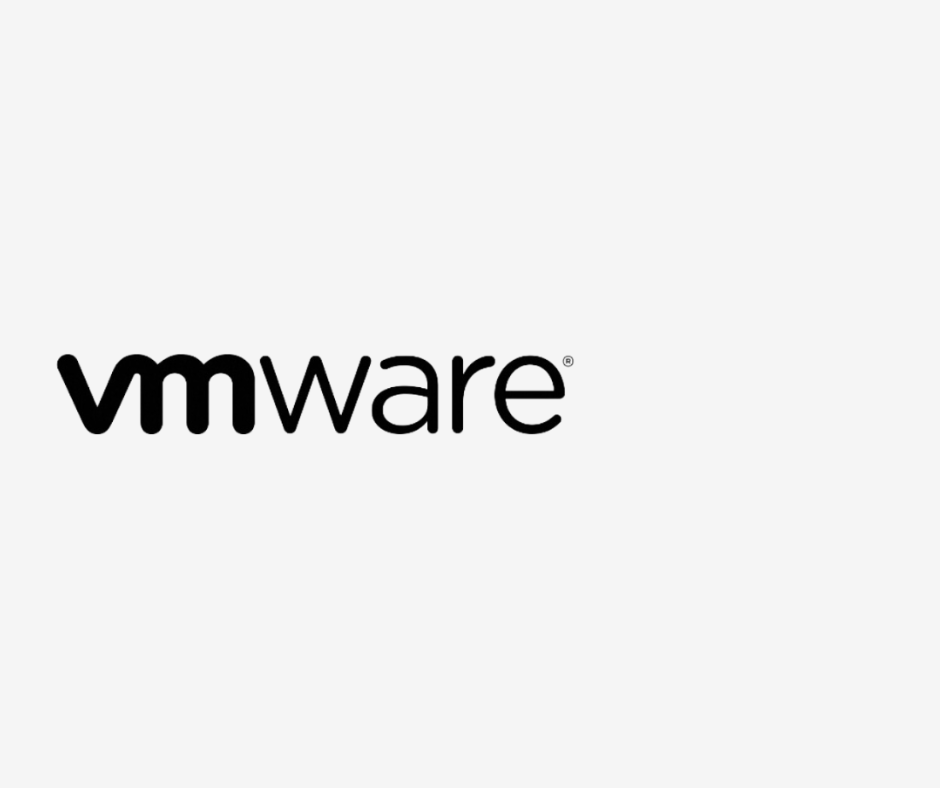- teamITsupport
- No Comments
In today’s fast-moving world of business, information technology (IT) isn’t just for big corporations. It’s a key ally to companies of all sizes, helping even medium-sized businesses grow and succeed while managing IT Support Cost for Medium Business. It’s like having a tech-savvy buddy in the corporate world, steering you toward progress and innovation!
Efficiently managing IT systems and infrastructure becomes vital for medium businesses to stay competitive, deliver seamless services to customers, and maintain a productive workforce.
This article aims to explore the significance of IT support costs for medium businesses, emphasize the critical need for efficient IT support, and discuss the various factors that influence the cost of such support.

Importance of IT Support cost for Medium Businesses
Medium-sized businesses frequently reach a critical point in their growth where things start to get more complicated, especially in the IT department.
As they expand, they see more devices, users, and servers popping up, making their IT needs more intricate. This growth puts extra pressure on their tech systems. In this setting, having solid IT support isn’t just nice to have; it’s a must-have. It’s like needing a skilled conductor to manage a growing orchestra, making sure the technological side of the business flows smoothly and everyone stays in harmony.
IT support is not merely a reactive service that comes into play when problems arise; it is a proactive approach to maintaining and optimizing a company’s IT systems. Utilizing professional IT support services enables medium-sized businesses to concentrate on their primary skills and strategic plans, fostering expansion and innovation.
Skilled experts with diverse IT expertise promptly diagnose and resolve issues, preventing potential problems from escalating and impacting the business.
Understanding the Need for Efficient IT Support
The need for efficient IT support cost for medium businesses goes beyond fixing technical issues. This support enables these businesses to concentrate on their essential strengths and strategic goals, spurring growth and innovation.
Medium-sized businesses need dependable assistance to manage, oversee, and enhance their IT infrastructure efficiently. This support encompasses various services, ranging from resolving day-to-day IT problems to proactively preventing potential issues and planning.
By leveraging efficient IT support, medium businesses can:
-
-
Minimize Downtime:
Swiftly resolving issues and proactively monitoring systems minimizes downtime, ensuring continuous business operations and enhancing productivity.
-
-
-
Enhance Security:
Robust security measures implemented by IT support providers safeguard critical business data and protect against cyber threats.
-
-
-
Optimize Performance:
IT support professionals optimize system performance, ensuring efficient utilization of IT resources.
-
-
-
Adapt to Growth:
As medium-sized businesses grow; their IT needs evolve. Efficient IT support services can scale and adapt to these changing requirements seamlessly.
-
-
-
Strategize IT Investments:
IT support providers assist in strategizing IT investments, aligning them with business goals, and ensuring a positive return on investment.
-
Factors Influencing IT Support Costs
The IT Support Cost for Medium Business is influenced by various factors. Understanding these factors is crucial for budgeting and selecting the most appropriate IT support model. Some of the key factors include:
1. Business Size and Complexity:
The size and complexity of a medium-sized business directly impacts its IT support requirements. As the business grows, the number of devices, users, and servers increases, necessitating a more comprehensive support system.
2. IT Infrastructure Requirements:
The technology stack and IT infrastructure of a medium business significantly influence the level of IT support needed. A business with specialized software and hardware may require more specialized support services.
3. Service Level Agreements (SLAs):
IT support providers offer different levels of support based on service level agreements (SLAs). Faster response times and extended coverage typically come at a higher cost.
4. In-house vs. Outsourced IT Support:
Medium businesses face the decision of whether to maintain an in-house IT team or outsource IT support to a third-party provider. In-house support may involve additional overheads, while outsourcing can offer cost-effective solutions.
5. Hardware and Software Costs:
IT support costs may include expenses for hardware upgrades, software licenses, and third-party tool subscriptions.
6. Contract Length and Pricing Models:
Long-term contracts may come with cost savings as providers offer discounts for extended commitments. Additionally, the pricing model, such as per-user or flat-rate pricing, can influence the overall cost.

Types of IT Support Services
IT support service cost for medium businesses are generally categorized into three tiers based on the level of support offered:
1. Basic Support Services:
Basic support services focus on addressing day-to-day IT issues and providing quick resolutions. They include:
-
-
Help Desk Support:
Think of this team as your IT lifeline. They’re there to help with everyday tech questions and sticky problems.
-
-
-
Software Updates and Maintenance:
Keeping your business software fresh and up to speed with the newest patches and versions, so everything runs smoothly
-
-
-
Hardware Troubleshooting:
If something’s gone wrong with the physical parts of your tech, these are the experts. They diagnose and fix hardware issues, doing repairs as needed. It’s like having a tech doctor on call for your gadgets!
-
2. Proactive Support Services:
Proactive support services focus on preventing potential issues before they escalate, enhancing the overall performance and reliability of IT systems. They include:
-
-
System Monitoring and Maintenance:
Constantly monitoring IT systems to identify potential issues, bottlenecks, or anomalies
-
-
-
Security Audits and Threat Prevention:
Conduct regular security audits to identify vulnerabilities and implement measures to prevent cyber threats and data breaches.
-
-
-
Performance Optimization:
Optimizing IT systems and resources to ensure efficient performance and productivity
-
3. Advanced Support Services:
Advanced support services provide comprehensive and specialized IT support for more complex and critical aspects of a medium business’s IT infrastructure. They include:
-
-
24/7 Monitoring and Emergency Response:
Offering round-the-clock monitoring and immediate response to critical incidents
-
-
-
Dedicated Account Managers:
Providing a dedicated point of contact and personalized support for medium businesses
-
-
-
Strategic IT Consulting and Planning:
Helping to formulate long-term IT strategies that are in harmony with the business objectives and expansion plans
-
Benefits of Outsourcing IT Support
Outsourcing IT support offers several advantages for medium businesses, including managing IT Support Cost for Medium Business efficiently:
1. Cost-Effectiveness and Return on Investment (ROI):
Outsourcing IT support can be more cost-effective than maintaining an in-house team, as it reduces overhead costs associated with hiring, training, and retaining IT staff. This cost-effectiveness translates to a better return on investment for the business.
2. Access to Specialized Expertise:
IT support providers have skilled professionals experienced in handling various IT challenges, from routine tasks to complex issues. This expertise ensures reliable and efficient solutions for medium businesses.
3. Focus on Core Business Activities:
Outsourcing IT support allows medium businesses to concentrate on their core activities and strategic initiatives without being burdened by IT-related issues. This focus on core business functions contributes to overall productivity and growth.
4. Scalability and Flexibility:
Outsourced IT support can easily scale with the business’s needs, accommodating growth without the need for continuous restructuring or hiring.
5. Enhanced Security Measures:
IT support providers implement robust security measures, protecting medium businesses from cyber threats and data breaches. These security measures are continuously updated to stay ahead of evolving threats.
6. Proactive Issue Resolution:
Proactive IT support involves identifying potential issues before they become major problems, reducing downtime, and mitigating the impact on the business.
7. Reliable Customer Support:
Outsourced IT support providers offer reliable customer support, ensuring prompt assistance for any IT-related concerns and inquiries.
Real-World Case Studies
Real-world case studies serve as practical examples of how IT support has benefited medium businesses.
1. Successful Implementation of IT Support for Medium Businesses:
These case studies showcase how IT support has improved business operations, streamlined processes, and increased efficiency for specific medium businesses.
2. Cost Savings and Efficiency Improvements:
Real examples of how outsourcing IT support has resulted in cost savings and improved return on investment for medium businesses
How Do You Choose the Right IT Support Provider?
Selecting the right IT support provider is a critical decision that can significantly impact a medium business’s efficiency and success. To make an informed choice, medium-sized businesses should consider the following factors:
1. Assessing business needs and goals:
Understanding the specific IT requirements and goals of the business is crucial in finding a provider that aligns with those needs.
2. Researching Potential Providers:
Conducting thorough research on potential IT support providers is essential. Consider their reputation, experience, client testimonials, and industry certifications.
3. Evaluating Service Offerings:
Ensure that the services offered by the IT support provider align with the business’s requirements and growth plans. This evaluation should cover the scope of services, response times, and problem-solving capabilities.
4. Checking Security Measures and Compliance:
Verify that the IT support provider implements robust security measures to protect sensitive business data and complies with industry regulations.
5. Understanding SLAs and Pricing Models:
Thoroughly review the service level agreements (SLAs) to understand the level of support the provider commits to. Additionally, have a clear understanding of the pricing model and any additional costs.
6. Customer Support and Communication:
Choose a provider that offers responsive and reliable customer support while maintaining open communication channels. This ensures that any issues or inquiries are promptly addressed.
7. Scalability and Flexibility Considerations:
Assess whether the IT support provider can scale their services to accommodate the business’s changing needs. Flexibility is crucial for a growing medium business.
Calculating IT Support Budget
Budgeting for IT support requires careful consideration to allocate resources effectively. Some key aspects to consider include:
1. Budget Allocation for Different Support Levels:
Determine how to allocate the budget for various support tiers based on the business’s priorities and critical needs.
2. Contingency Planning for Unforeseen IT Costs:
Prepare for unexpected IT expenses by including a contingency plan in the budget. This ensures that the business can handle emergency situations without compromising operations.
3. Evaluating cost-effectiveness and ROI:
Analyze the cost-effectiveness of the IT support investment and its impact on the business’s overall return on investment. A well-managed IT support strategy should contribute positively to the business’s bottom line.

Tips for Cost Optimization in medium business
Optimizing IT support costs benefits the business in various ways:
1. Identifying Areas for Cost Savings:
Conduct a thorough assessment of IT operations to identify areas where cost savings can be achieved without compromising quality.
2. Negotiating contracts with IT support providers:
Negotiate with IT support providers to get the best value for the services offered. Long-term contracts may come with cost savings or added benefits.
3. Leveraging Technology to Enhance Efficiency:
Utilize technological tools and solutions to optimize IT operations, streamline processes, and enhance overall efficiency.
4. Implementing Sustainable IT Practices:
Adopt sustainable IT practices that focus on optimizing resource utilization and minimizing long-term costs. Sustainable practices also promote environmental responsibility.
Case Study Analysis: Cost-Effective IT Support Solutions
Analyzing case studies of cost-effective IT support strategies helps medium businesses understand successful approaches:
1. Analyzing cost-effective IT support strategies:
Examine different strategies used by businesses to achieve cost-effective IT support, including outsourcing models and optimizing internal processes.
2. Best Practices for Medium Businesses:
Identify the best practices that medium businesses can adopt to optimize IT support costs and get the most value from their investments.
Future Trends in IT Support for Medium Businesses
Looking ahead, several trends are shaping the landscape of IT support for medium businesses:
1. Cloud-Based Support Solutions:
Explore the advantages of cloud-based IT support solutions and how they benefit medium businesses, such as increased flexibility and scalability.
2. Automation and Artificial Intelligence:
Discuss how automation and AI technologies are revolutionizing IT support, reducing manual tasks, and improving response times.
3. Security Enhancements and Data Protection:
Examine the latest security advancements in IT support, including advanced threat detection and data protection measures.
4. Evolving IT Support Models:
Explore the shift towards more flexible and adaptive IT support models that cater to the unique needs of medium businesses.
Conclusion
Efficient IT support is a critical asset for medium businesses in today’s technology-driven world. By understanding the factors influencing IT support costs and considering the benefits of outsourcing, medium businesses can make informed decisions and choose the right IT support provider.
Analyzing real-world case studies, implementing cost optimization strategies, and staying updated on future trends will empower medium businesses to navigate the dynamic technological landscape and manage their IT support costs effectively.
Ultimately, investing in reliable IT support can yield significant returns by enabling businesses to focus on innovation, customer satisfaction, and sustainable growth.
IT Support Cost for Medium Business FAQ
The typical costs for IT support for a medium-sized business can range from $5,000 to $50,000 per month, depending on the complexity of the IT environment and the level of service required. Managed IT services, which provide comprehensive support, can cost between $100 to $200 per user per month.
The cost of IT support is calculated based on several factors, including the number of users, the size and complexity of the IT infrastructure, the types of services required (such as cybersecurity, cloud management, or data backup), and the chosen service model (hourly rates, fixed monthly fees, or per-user pricing).
Pricing models for IT support services typically include hourly rates, fixed monthly fees (managed services), and per-user or per-device pricing. Some providers also offer tiered packages, where costs vary depending on the level of service, response times, and support coverage.
Key factors influencing IT support costs include the size of the business, the complexity of the IT environment, the level of support needed, the number of users and devices, specific compliance or security requirements, and whether the business opts for on-site or remote support.
A medium-sized business should budget between 3% to 6% of its annual revenue for IT support, depending on its industry, reliance on technology, and specific IT requirements. This typically translates to an annual IT support budget ranging from $60,000 to $600,000.

















